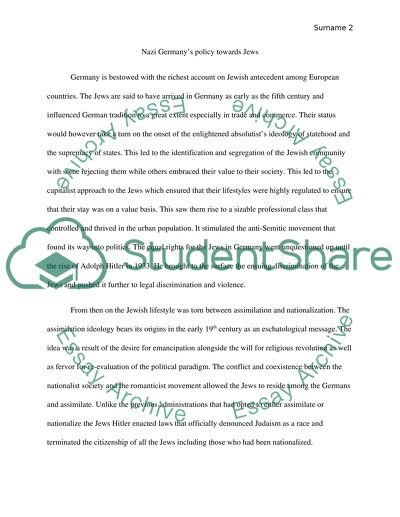Cite this document
(“Policies of Nazi Germany towards Jews and the Policies towards Jews of Essay”, n.d.)
Policies of Nazi Germany towards Jews and the Policies towards Jews of Essay. Retrieved from https://studentshare.org/literature/1446809-compare-and-contrast-the-policies-of-nazi-germany
Policies of Nazi Germany towards Jews and the Policies towards Jews of Essay. Retrieved from https://studentshare.org/literature/1446809-compare-and-contrast-the-policies-of-nazi-germany
(Policies of Nazi Germany towards Jews and the Policies towards Jews of Essay)
Policies of Nazi Germany towards Jews and the Policies towards Jews of Essay. https://studentshare.org/literature/1446809-compare-and-contrast-the-policies-of-nazi-germany.
Policies of Nazi Germany towards Jews and the Policies towards Jews of Essay. https://studentshare.org/literature/1446809-compare-and-contrast-the-policies-of-nazi-germany.
“Policies of Nazi Germany towards Jews and the Policies towards Jews of Essay”, n.d. https://studentshare.org/literature/1446809-compare-and-contrast-the-policies-of-nazi-germany.


